Across Asia, chefs are celebrating their national cuisines in exciting, emotional and unexpected ways. Stephenie Gee talks to three who stand out for their commitment to preserving – and sometimes refreshing – the region’s rich food heritage
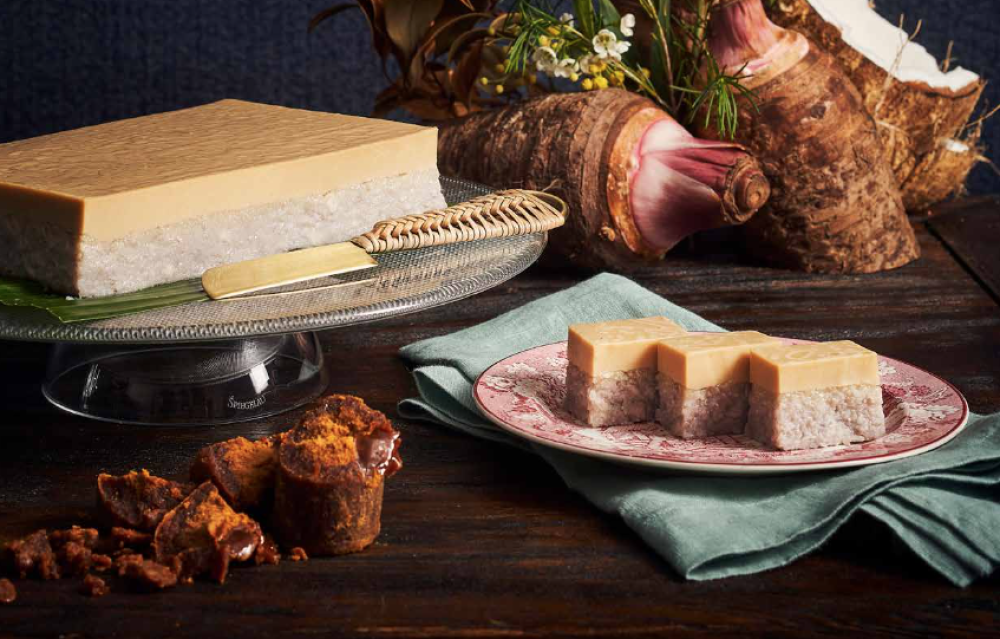
Asia is the largest continent on Earth, extending from the eastern Mediterranean Sea to the western Pacific Ocean, spilling into the northern hemisphere and across the eastern hemisphere, and covering almost 30% of the total landmass of the planet. The most populous continent – with its 4.79 billion inhabitants accounting for 60% of the global population – and the birthplace of some of our earliest civilisations, Asia also boasts a rich cultural landscape from which is born some of the world’s most iconic, revered and flavoursome food. Each bite holds a snippet of the past, an insight into the culture it came from, the traditions it represents and the lives of the people who created it – a grandmother’s love, a farmer’s toil, a chef’s passion.
Today, these are the stories that call for our attention. In our ever-changing world, where trends shift and the clamour for novelty prevails, there’s a profound value in holding on to the traditional foodways and recipes that have stood the test of time. Representing a tapestry of history, beliefs and identity, they serve not only as markers of our past but also pivotal elements that shape our present and future, connecting us to our roots and reflecting the diversity of our world and richness of our shared human experience.
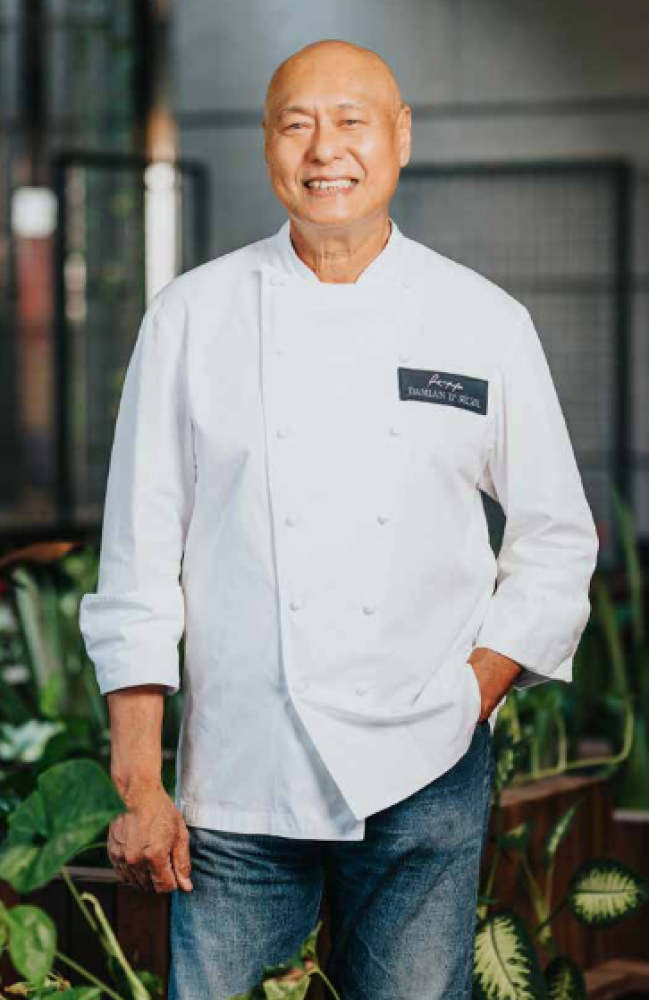
Damian D’Silva understands this well. Referred to fondly as the “grandfather of heritage cuisine”, the lanky 67-year-old Singaporean has spent the last 20 years championing the preservation and continued elevation of Singapore heritage cuisine, plumbing his childhood memories to recreate dishes that have long disappeared from local tables. “Singapore heritage cuisine is food that Singaporeans from different ethnicities grew up eating. The cuisine encompasses the history, culture and celebrations that have played a part in shaping each dish of the various ethnic groups that have been present in Singapore over the last 200 years,” explains D’Silva, who is of Eurasian and Peranakan descent. “Heritage food is the essence of who you are. It represents customs, beliefs and where you come from. If you take heritage away from a person, you take away their soul.”
At his all-day eatery Rempapa (derived from the Malay word rempah, meaning “spice paste”, and D’Silva’s reputation as the “papa” of heritage cuisine), D’Silva honours the threads that make up Singapore’s cultural tapestry with flavours of the Chinese, Peranakan, Eurasian, Indian and Malay kitchens. The recipes – many of which are deeply personal, like the babi pongteh, a signature Peranakan speciality of braised pork in fermented bean paste that D’Silva’s grandmother would prepare during special occasions; baca assam, a tangy rempah- based Eurasian beef-cheek stew passed down from his grandad’s aunt that has almost been lost through the ages; and his granddad’s kedondong salad, featuring wing bean, ginger flower, herbs and peanut brittle – remain unchanged, and the sauces are all made in-house.
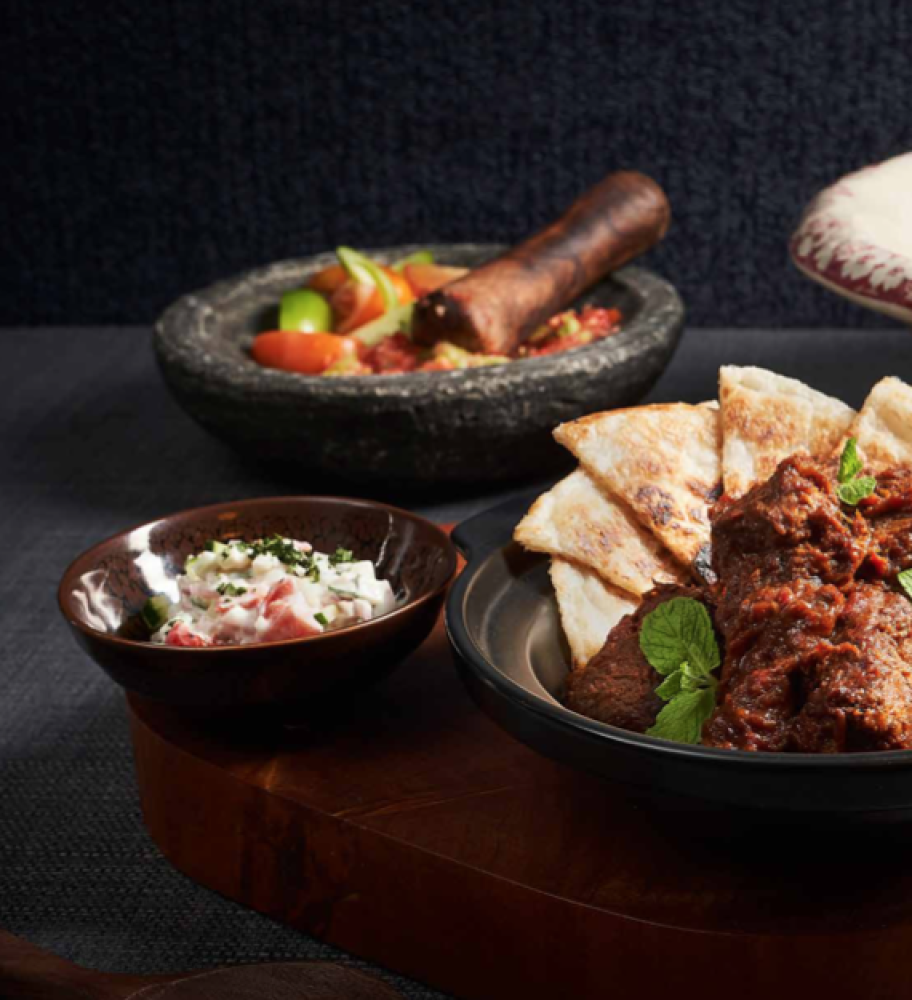
“I don’t really reinvent heritage cuisine; I like to keep the soul of a dish, its ingredients and execution,
as original as possible,” D’Silva says. Influenced by the culinary greats of his childhood, namely his grandparents, he learned to appreciate the hours of toil and love poured into preparing a dish. “What I do is make the dish more approachable by ‘tweaking’ some of the ingredients, giving it a friendlier taste that the younger generation can accept.” In his braised beef with raita and roti, for example, the addition of round cumin and coriander seeds brings complexity, and bay leaves are replaced with daun salam, a local bay leaf native to Indonesia that imparts a slight citrus note. On the side to pare down the stew’s sweetness is a serving of Indian raita. It’s a uniquely Singaporean version of goulash and sour cream.
His efforts are paying off. This year, D’Silva became the first Singaporean to be awarded the prestigious La Liste Artisan & Authenticity Award. Yet while a resurgence of interest in the country’s heritage cooking is well underway, it still struggles to find its place on the world stage. “It was a great honour to be acknowledged internationally, but there’s still so much more to be done,” he laments. “I want our cuisine to be embraced by every culinary institution and city because it deserves acknowledgement.” Most recently, this was Hong Kong, where for two days in June D’Silva joined head chef Jack Lam Yeung of Ming Pavilion at Island Shangri-La in cooking up a special menu of soulful Hokkien dishes, such as
kueh pie tee, a well-loved snack of crispy pastry shells filled with jicama, bamboo shoot, and a pork and prawn stock; the classic sweet-tangy Peranakan chicken dish of ayam siow; and nonya chap chye, or braised mixed vegetable stew. A keen teacher, D’Silva also hosted a masterclass for his signature babi chin, a braised pork dish steeped in Chinese traditions associated with significant celebrations and gatherings.
Also see: Where and what to eat in Hong Kong
“One of my favourite ways to preserve heritage is to teach. I find great joy in teaching – mothers and grandmothers especially, as they are usually the ones cooking for everyone at home, making them the perfect candidates for sharing these dishes with a wider audience and ensuring that the heritage food is passed on,” he explains. “[Throughout my journey] there have been many challenges, and it has been an uphill task. I still have a long way to go. But I pray that one day, we’ll have Singapore heritage restaurants around the world. It’s a difficult undertaking, but not impossible.”
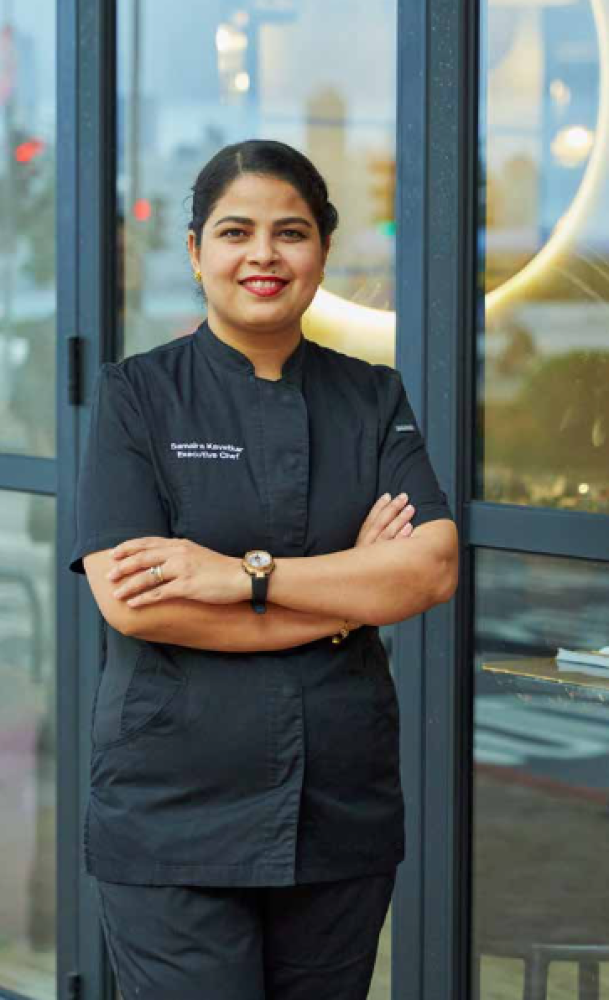
D’Silva is not alone in this quest. Closer to home, paralegal-turned-chef Samaira Kavatkar of Nine One – named after India’s international area code – is drawing from her Indian-Portuguese heritage to offer diners new insights to understanding Indian cuisine beyond the conventional, though popular, offerings like naan bread and curries. “Nine One’s culinary journey unveils regional community-based flavours from all corners of India. Inspired by my Indian-Portuguese roots and generations of family recipes, I want to celebrate the diversity and rich heritage of this multifaceted cuisine, offering a new perspective. There is a misunderstanding among food lovers, that there are only curries in Indian cuisine. But the reality is there is so much more, and I’m here to show the many possibilities of Indian cuisine beyond expectations,” she says.
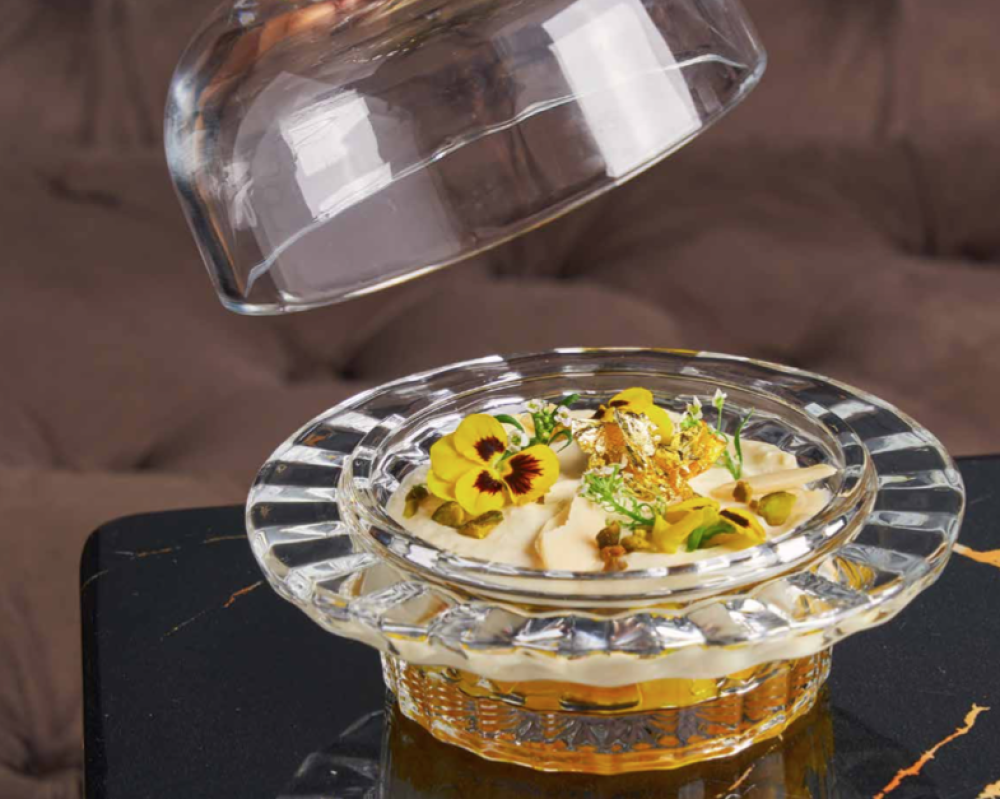
Born and raised in Mumbai to a Catholic father and Hindi mother with East Indian roots (an ethno- religious Indian Roman Catholic community that traces its history back to Portuguese rule in the 15th and 16th centuries), Kavatkar cooks with an innate sincerity. “Growing up, my mother believed in taking the time to prepare meals from scratch, using fresh ingredients and traditional cooking methods. This approach taught me the value of patience, attention to detail and the importance of savouring each bite. At Nine One, I strive to bring this same philosophy to the table, creating dishes that are crafted with care and intention. I also greatly value community and family recipes, as they carry the essence of shared experiences and traditions,” she explains. “While my approach may be considered unconventional in a fast-paced world, I believe it is important to prioritise quality, authenticity and connections to create meaningful culinary experiences.”
A crowd favourite, the East Indian lamb potato chop takes Kavatkar back to her childhood days when the family would gather around the table every Sunday after church and on special occasions eagerly awaiting the golden-brown, breaded potato patty stuffed with flavourful minced lamb. Throwing in a personal twist, the Nine One rendition is paired with a fragrant green pea chutney and refreshing kachumber relish made using fresh tomato and cucumber. Also of note is the East Indian fish kujit or fish stew, an East Indian community staple and a personal favourite of Kavatkar, wrapped and steamed in banana leaf, which lends an herbaceous touch, and served with plain uttapam, a South-Indian fermented rice cake, garnished with raw and mildly spiced laccha onion; and the succulent roasted three yellow chicken marinated in bottle masala, an East Indian spice blend named for the darkly coloured bottles it’s stored in.
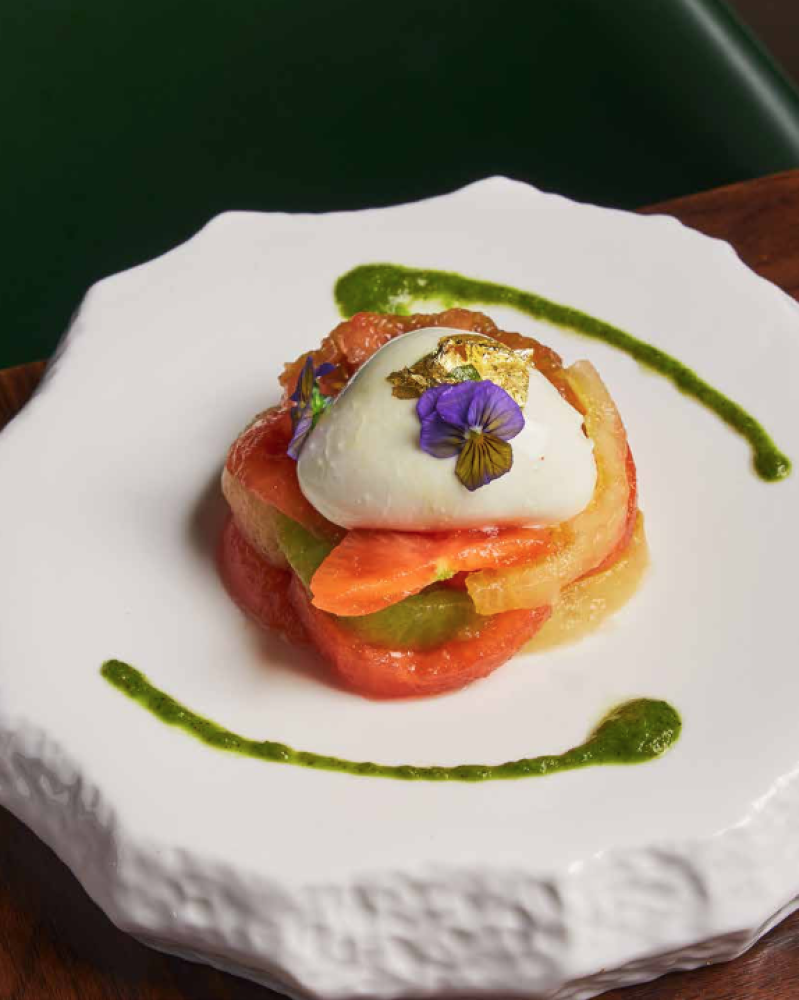
“As a chef, embracing my heritage holds great importance,” she says. “It allows me to preserve and promote culinary traditions that may be at risk of fading away in today’s rapidly evolving and globalised food industry. By incorporating traditional dishes, ingredients and cooking methods into my repertoire, I pay tribute to the culinary pioneers and previous generations who have contributed to the evolution of my cuisine. It’s a way of honouring their legacy and ensuring that their culinary contributions are not forgotten.”
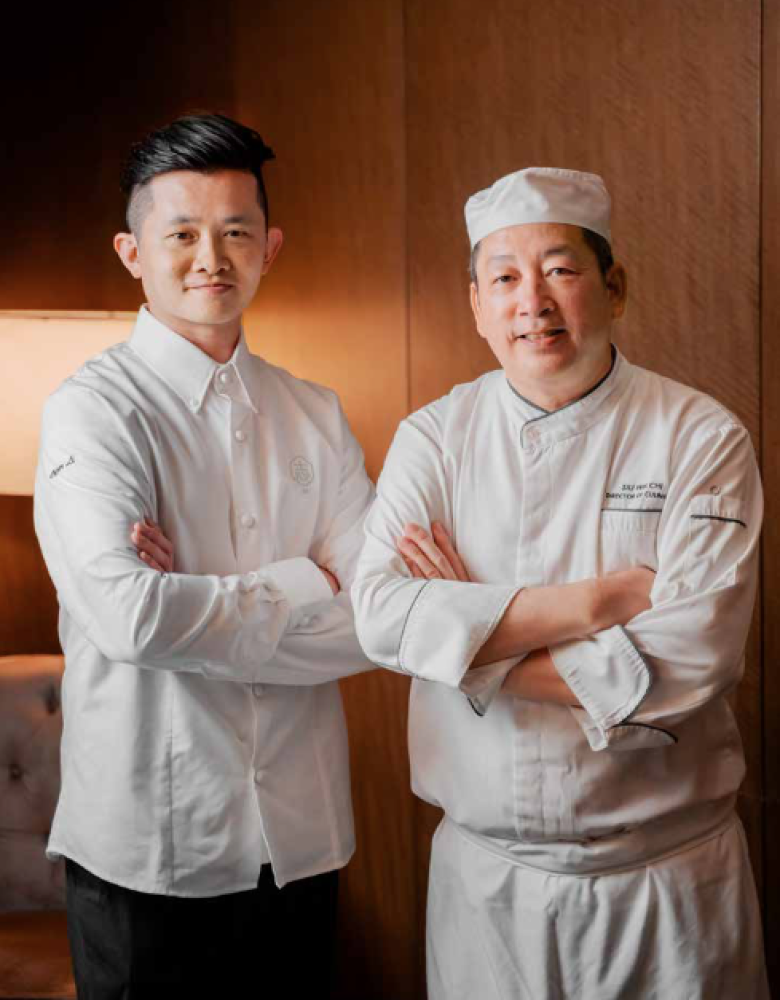
But as our world is growing more interconnected, the boundaries of culinary traditions have become beautifully blurred. We’re not just bound to the confines of our ancestral recipes; we’re global citizens, sampling and integrating a mosaic of culinary wonders. This is the notion played out in ZS Hospitality’s newest concept, Jee. Here, Siu Hin-Chi – culinary director of the two-starred Ying Jee Club and a guardian of culinary traditions with an illustrious 45-year career in some of our city’s most venerated Chinese restaurants – has come together with rising star Oliver Li, who holds a decade of experience in Michelin kitchens including L’Atelier de Joël Robuchon, Restaurant L’Envol and Feuille, to reimagine and redefine the possibilities of Cantonese cuisine. “The concept behind Jee revolves around a captivating blend of cross- generational and cross-cultural influences, fostering a vibrant exchange of passions
and gastronomy,” says Li. “Chef Siu and I have united with a shared vision to push the boundaries of Cantonese cuisine, driven by our curiosity and commitment to innovation.”
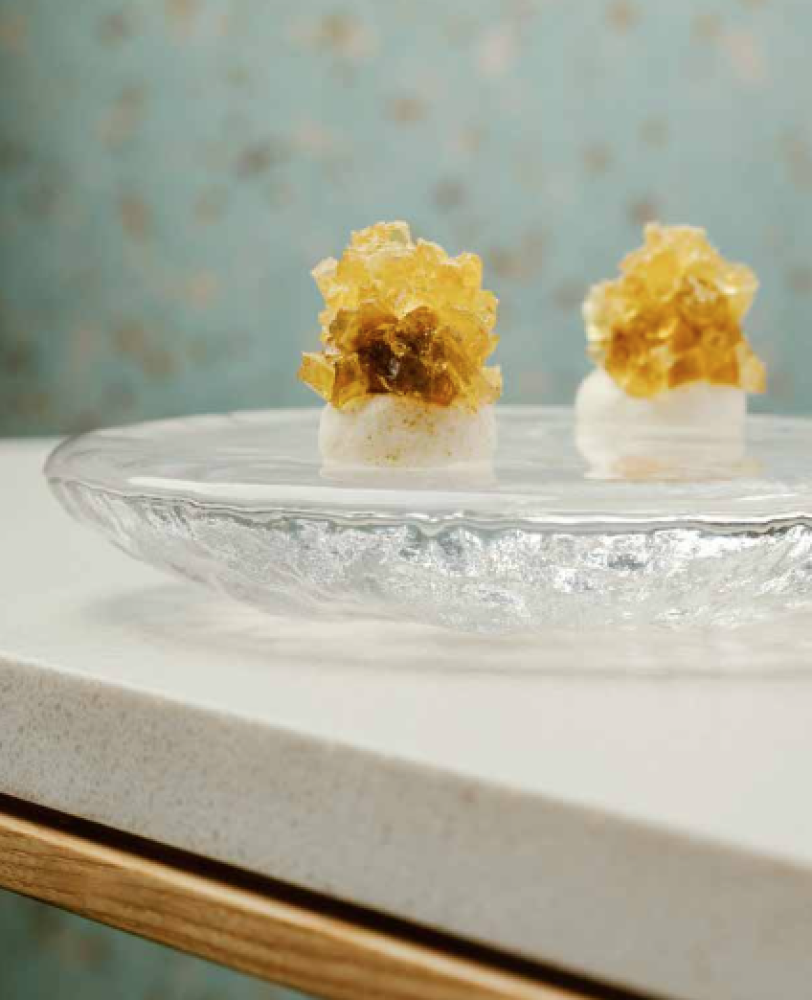
The collaboration between the two is a close and dynamic one. “During the research and development phase, we actively sought each other’s opinions and advice, worked closely together to brainstorm ideas, experimented with ingredients and techniques, and refined the flavours and presentation of each dish,” Li recalls. “I’m driven by a desire to explore the potential of different ingredients and their adaptability across various culinary styles. I draw inspiration majorly from Chef Siu and his traditional Cantonese cuisine, seeking to pay tribute to his cooking techniques and dishes served at Ying Jee Club. This influence, coupled with my passion for blending culinary traditions, motivates me to apply the finest Cantonese ingredients with a touch of French cooking methods.”
Take as an example the fried garoupa with trio scallion. Inspired by Siu’s renowned and beloved dish of stir-fried lobster with shallot and scallion, the garoupa is filleted and browned in a mixture of scallions, ginger and chicken oil the traditional Cantonese way. It is then elevated with a green sauce made from leeks and a flavourful yellow sauce created through the emulsification of chicken, oil, ginger, French yellow wine and dried scallions. Or, the soft-shell turtle jelly with caviar, where traditional soft-shell turtle broth is reinterpreted as a refreshing starter. Double- boiled at low temperatures with premium broth for 12 hours, the jelly incorporates soft-shell turtle meat and outskirts of the shell, complemented by Yunnan smoked bamboo shoot, celery and milk. A touch of caviar to finish enhances its freshness and evokes a delightful umami flavour.
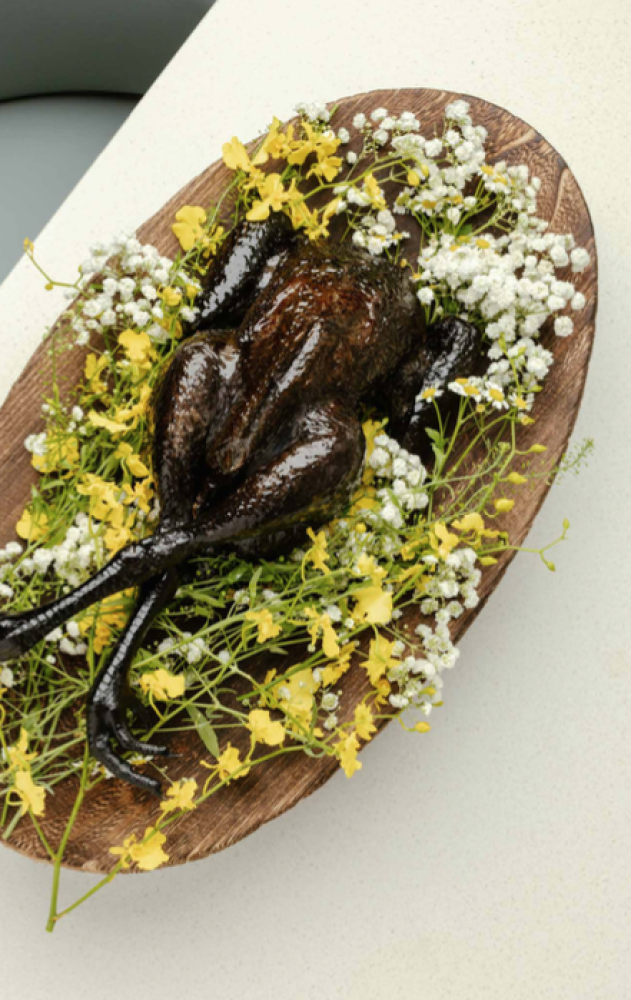
Which begs the question: How do we ensure that the essence of our traditional dishes, the soulful stories they carry, don’t get lost in this whirlwind of innovation and experimentation? Balance, Li says, is the key. Just as we embrace the new, we must also cherish the old. It’s important to preserve the legacy of our culinary traditions, not as rigid templates, but as fluid narratives that shape our food story. “As a chef, I respect the foundations of Cantonese cuisine by understanding and appreciating traditional techniques, ingredients and flavours,” he says. “It’s important to me to embrace local ingredients that are authentic to the region, as they bring unique and vibrant flavours to our dishes. While we strive to maintain the essence of Cantonese cuisine, we also explore innovative techniques that allow us to reinterpret traditional dishes without compromising their core elements.”
Also see: #legendeats: Mooncakes for Mid-Autumn Festival 2024





